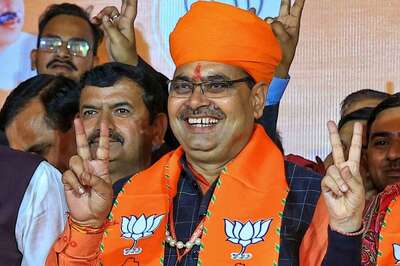
views
New Delhi: The Economic Survey tabled in the Parliament by Finance Minister Arun Jaitley on Monday for the first time revealed the size of the formal and informal sector along with providing definition for the same.
Economists and the industry have forever been at loggerheads about the definite size of the formal sector. Answering the much-debated question, the survey said, “About 0.6 percent of firms, accounting for 38 percent of total turnover, 87 percent of exports, and 63 percent of GST liability are what might be called in the “hard core” formal sector in the sense of being both in the tax and social security net.”
The survey said that there are many different definitions of formal and informal sectors. “The most common ones are: (a) whether a worker has a formal contract; (b) whether a worker is a regular/salaried worker (as opposed to self-employed or casual); (c) whether a firm is registered with any branch of the government; (d) whether the firm pays taxes; and (e) whether a worker receives social security,” defined the report.
“At the other end, 87 percent of firms, representing 21 percent of total turnover, are purely informal, outside both the tax and social security nets,” said the report, estimating the size of the informal sector.
The survey also revealed that post implementation of the goods and service tax (GST) bill on 1 July last year, number of indirect tax payers increased by a half with Maharashtra, Uttar Pradesh (UP), Tamil Nadu and Gujarat having the highest number of GST registrants.
“Adjusting the base for double and triple counting, the GST has increased the number of unique indirect taxpayers by more than 50 percent, a substantial 3.4 million,” said the survey.
The Economic Survey is prepared by Chief Economic Adviser (CEA) Arvind Subramania and his team of economists.
“The GST has been widely heralded for many things, especially its potential to create one Indian market, expand the tax base, and foster cooperative federalism. Yet almost unnoticed is its one enormous benefit: it will create a vast repository of information, which will enlarge and surely alter our understanding of India’s economy,” said the survey.
Analysing the export sector, the Survey stated that there is a strong correlation between export performance and an Indian states’ standard of living, more the export, better the standard of living in the corresponding state.
The survey, interestingly, noted that, “India’s exports are unusual in that the largest firms account for a much smaller share than in other comparable countries”.
The Survey also found out that India’s formal sector non-farm payroll is substantially greater than currently believed.
“Formality defined in terms of social security provision yields an estimate of formal sector payroll of about 31 percent of the nonagricultural work force; formality defined in terms of being part of the GST net suggests a formal sector payroll of 53 percent,” said the report.




















Comments
0 comment